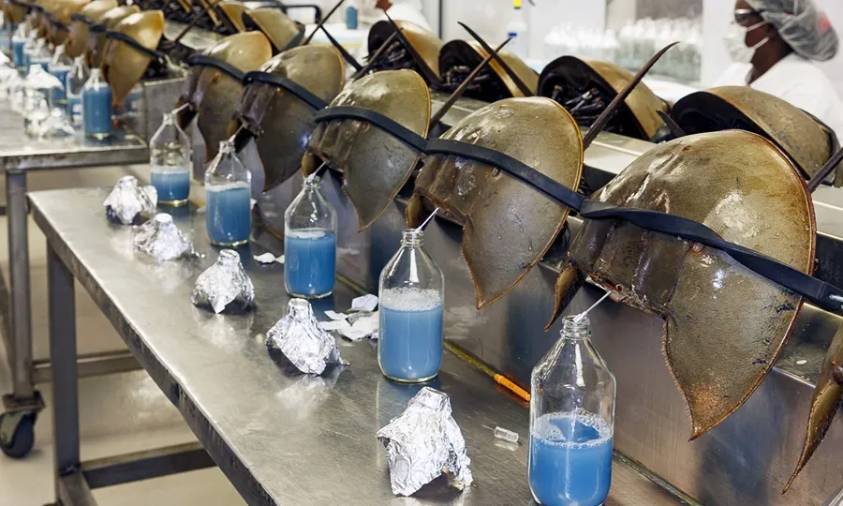This June 20th, we celebrate the 3rd International Horseshoe Crab Day.
For those who don’t know about these creatures, here is a small introduction about them. Horseshoe Crabs are not an average marine animals. They are 450 million years old living fossils. These are older than most dinosaurs and even survived five mass extinction events by staying in the ocean’s depths. They have only evolved once in the shallow seas of the Paleozoic Era (540-248 million years ago). Even though they look prehistoric with no relatives, they are actually close relatives of modern spiders and scorpions.
These animals are captured for their blue blood, which is used for examining medical products because there is a protein called Limulus Amebocyte Lysate.
Fun Fact: Did you know that the Horseshoe Crab’s blood was a vital ingredient in the COVID-19 Vaccine?
The scientists’ intention is not to kill them but to examine them. However, their survival is uncertain when they are released from the laboratories back into the ocean.
A Few years ago, these blue-blooded marine creatures were common sights on the shores of Odisha and West Bengal. But now, they are classified as ‘Near Threatened’ by the International Union for Conservation of Nature(IUCN). There are only around 700,000 more horseshoe crabs while there were over 1,000,000 horseshoe crabs in the early 2000s. “We have not seen them in large numbers for the past four or five years,” said a fisherman from Laxmipur village, adjacent to Bakkhali beach in West Bengal, where Horseshoe crabs were frequently seen during the past. This is an example of why the Horseshoe crabs are listed as near threatened by the IUCN.
If we humans don’t stop killing the horseshoe crab for its blue blood, the third oldest animal on our earth will soon become extinct. To make sure that these prehistoric animals can stay a little longer with us, you may make a donation to the World Wildlife Fund which works towards the conservation of such endangered species, as part of their projects.
Featured Image Credit: Ariane Mueller Source: horseshoecrab.org

